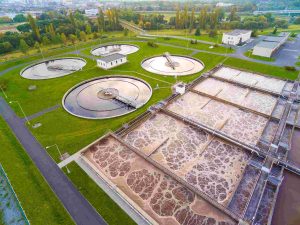With the advancement of technology and increasing environmental awareness, polymer materials have found extensive applications across various fields. Super Absorbent Polymers (SAP) and water-soluble films are significant among these materials. To enhance their properties, curing agents play a crucial role. This article delves into the characteristics, mechanisms, and applications of SAP and water-soluble film curing agents.
Part 1: Overview of Super Absorbent Polymers
Super Absorbent Polymers (SAPs) are materials with a remarkable ability to absorb and retain large quantities of water, often several hundred times their own weight. These materials are widely used in healthcare, agriculture, personal care, and industrial applications.

1.1 Structure and Properties of Super Absorbent Polymers
SAPs are typically composed of acrylic acid (or its salts) copolymerized with other monomers, forming a three-dimensional cross-linked structure. This cross-linked structure provides exceptional water absorption and retention capabilities. Key characteristics of SAPs include:
- High Absorbency: Capable of absorbing large amounts of water or other fluids.
- Retention Ability: Forms a gel-like substance after absorption, securely holding the absorbed water.
- Biocompatibility: Non-toxic and safe for use in medical and personal care products.
1.2 Applications of Super Absorbent Polymers
The widespread use of SAPs is attributed to their superior absorbency and retention properties. Major application areas include:
- Hygiene Products: Such as baby diapers, adult incontinence products, and feminine hygiene products.
- Agriculture: Used as soil conditioners to help maintain soil moisture and improve plant drought resistance.
- Medical Field: Employed in wound dressings and surgical pads to absorb bodily fluids and keep wounds dry.
- Industrial Applications: Including flood control bags and cooling agents.
-

Sludge treatment
Part 2: Overview of Water-Soluble Films
Water-soluble films are materials that dissolve in water, primarily made from water-soluble polymers like polyvinyl alcohol (PVA). These films are characterized by their biodegradability, environmental friendliness, and safety, making them suitable for packaging, agriculture, and medical applications.
2.1 Structure and Properties of Water-Soluble Films
Water-soluble films consist of polymer chains that dissociate and dissolve in water. Their main characteristics include:
- Water Solubility: Can rapidly dissolve in water, reducing solid waste.
- Environmental Friendliness: Biodegradable and non-polluting.
- Safety: Non-toxic and safe for direct contact with food and pharmaceuticals.
2.2 Applications of Water-Soluble Films
Due to their unique properties, water-soluble films have found applications in various fields:
- Packaging Materials: Such as laundry bags, pesticide bags, and food packaging, which dissolve in water for convenient use.
- Agriculture: Used in seed tapes and fertilizer packets to control dissolution rates for precise application.
- Medical Field: Employed in dissolvable gloves and surgical gowns to reduce medical waste.
Part 3: Super Absorbent Polymer Water-Soluble Film Curing Agents
Curing agents are essential for enhancing the performance of SAPs and water-soluble films. By forming cross-linked structures through chemical reactions, curing agents improve the physical and chemical properties of these materials.
3.1 Types of Curing Agents
Curing agents can be categorized based on their chemical composition and reaction mechanisms:
- Organic Cross-Linking Agents: Such as glutaraldehyde, epoxy resins, and isocyanates, which form covalent bonds to enhance mechanical strength and water resistance.
- Inorganic Cross-Linking Agents: Such as silanes and titanates, which form inorganic-organic hybrid networks to improve chemical resistance and thermal stability.
- Photocuring Agents: Such as UV-curing agents, which undergo cross-linking reactions under UV light for rapid curing.
3.2 Mechanisms of Curing Agents
Curing agents react with reactive groups (e.g., hydroxyl, carboxyl) on the polymer chains, forming cross-linked structures. This process involves several steps:
- Reaction Activation: The curing agent initially contacts and reacts with reactive groups on the polymer chains, forming activation centers.
- Cross-Linking Reaction: The activation centers further react to form covalent or other types of chemical bonds, constructing a three-dimensional cross-linked network.
- Curing and Shaping: After the cross-linking reaction, the material forms a stable three-dimensional network structure, significantly enhancing its physical and chemical properties.
3.3 Advantages of Curing Agents
Using curing agents to treat SAPs and water-soluble films offers several advantages:
- Enhanced Mechanical Strength: Increases the tensile strength and toughness, making the material less prone to damage during use.
- Improved Water Resistance: Slows down the dissolution rate in water, meeting specific application requirements.
- Increased Chemical Resistance: Enhances resistance to acids, bases, and other chemicals, extending the material’s lifespan.
- Enhanced Thermal Stability: Improves performance under high temperatures, preventing deformation or degradation due to heat.
Part 4: Application Examples of Super Absorbent Polymer Water-Soluble Film Curing Agents
4.1 Application in Hygiene Products
In hygiene products such as baby diapers, adult incontinence products, and feminine hygiene products, cured SAPs significantly enhance absorption speed and capacity while improving mechanical strength to ensure stability and comfort during use.
4.2 Agricultural Applications
In agriculture, cured SAPs and water-soluble films are used to create seed tapes and fertilizer packets. By controlling the degree of curing, the dissolution rate of the water-soluble film can be adjusted to ensure timely release of seeds and fertilizers, improving agricultural productivity.
4.3 Medical Applications
In the medical field, cured water-soluble films are used to make gloves, surgical gowns, and wound dressings. The curing process enhances the mechanical strength and water resistance of the materials, ensuring safety and effectiveness during use.
4.4 Industrial Applications
In industrial applications, cured SAPs and water-soluble films are used to manufacture flood control bags, cooling agents, and more. The cured materials exhibit higher mechanical strength and chemical resistance, maintaining stability and functionality under harsh conditions.
Part 5: Future Development Trends
As technology advances and application demands increase, the research and application of SAPs and water-soluble film curing agents will continue to evolve. Future development trends include:
- Eco-Friendly Curing Agents: Developing more environmentally friendly, non-toxic curing agents to reduce impact on the environment and human health.
- Smart Materials: Creating smart responsive materials, such as temperature-responsive and pH-responsive materials, to meet more specialized application needs.
- High-Performance Materials: Improving curing agent formulations and processes to further enhance the comprehensive performance of materials and expand their application range.
Conclusion
SAPs and water-soluble films are widely used in various fields, and the use of curing agents further enhances their performance. By selecting and using curing agents appropriately, the mechanical strength, water resistance, chemical resistance, and thermal stability of these materials can be significantly improved, meeting the specific requirements of different applications. In the future, with continuous technological advancements, SAPs and water-soluble film curing agents will play a more critical role in various fields, bringing more convenience and benefits to human life and industrial production.
This concludes the detailed introduction to GelSAP water-soluble film curing agents. We hope this blog post helps readers gain a better understanding of the knowledge and applications in this field. If you are interested in related products or technologies, please feel free to contact us. We are here to serve you.

